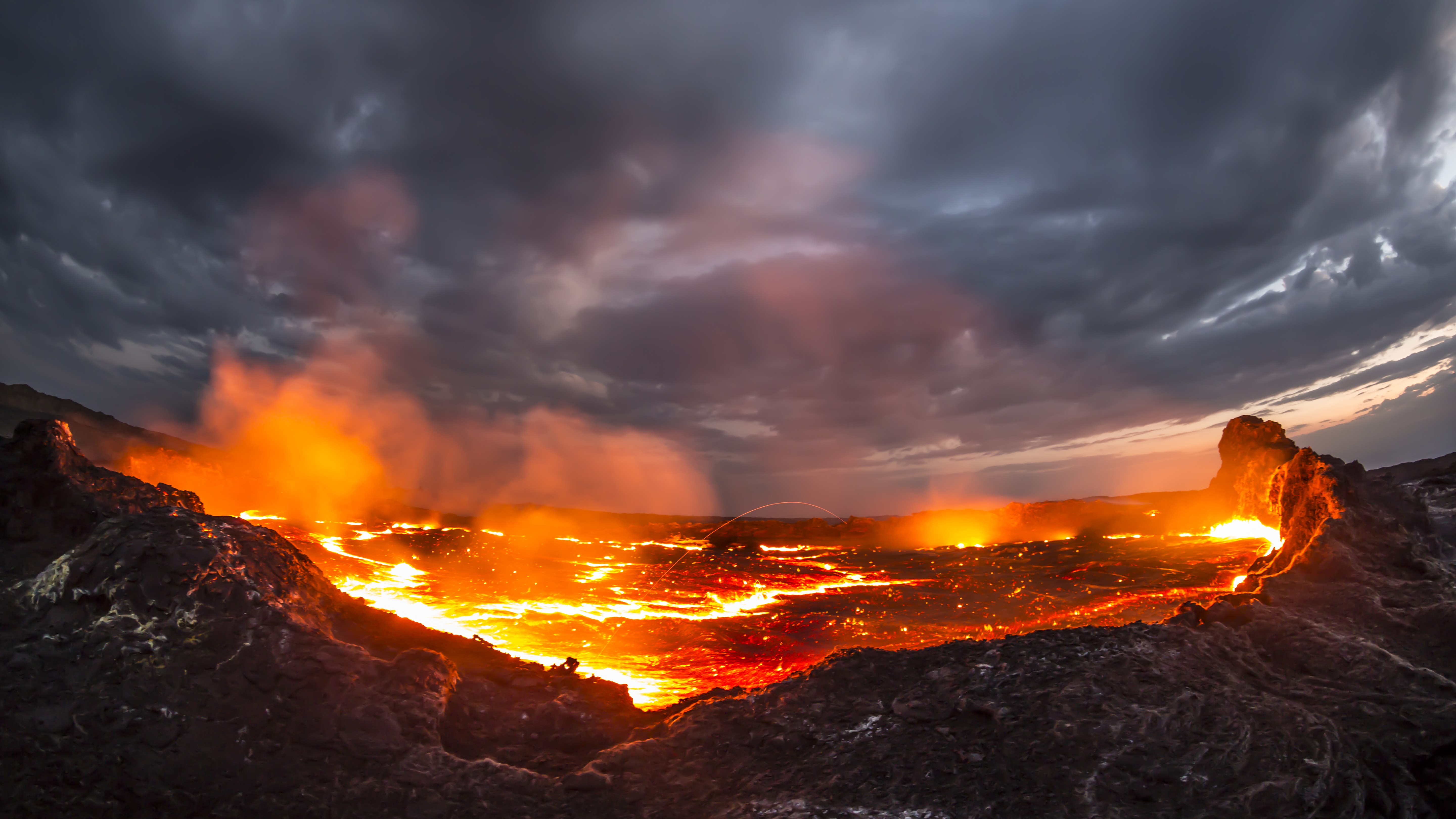Africa is being torn apart by a 'superplume' of hot rock from deep within Earth, study suggests
Researchers have found fresh evidence that Africa is breaking apart because of a deep mantle superplume of hot rock beneath the East African Rift System.

Researchers have found new evidence that a gigantic superplume of hot rock is rising beneath Africa, causing intense volcanic activity and splitting the continent in two.
Geologists have long known that Africa is slowly breaking apart in a region called the East African Rift System (EARS), but the driving force behind this massive geological process was up for debate. Now, a new study has presented geochemical evidence that a previously theorized superplume is pressing up against — and fracturing — the African crust.
Scientists found that gases at the Meengai geothermal field in central Kenya have a chemical signature that comes from deep inside Earth's mantle, likely from between the bottom of the mantle and the core. The signature matches those of gases found in volcanic rocks to the north, in the Red Sea, and to the south, in Malawi, indicating all of these places are sitting on the same deep mantle rock, according to a statement from the University of Glasgow in Scotland.
"The deep mantle signatures observed in different segments of EARS are remarkably similar, suggesting that they all originate from a common deep source," study first-author Biying Chen, a postdoctoral research associate in the School of Geosciences at the University of Edinburgh in Scotland, told Live Science in an email.
The researchers published their findings May 12 in the journal Geophysical Research Letters.
Related: 'River of fire' unleashes toxic gases as eruption destroys town in La Palma — Earth from space
EARS is the largest active continental rift system on Earth, ripping through around 2,175 miles (3,500 kilometers) of Africa. The lithosphere, Earth's rocky outer shell of crust and upper mantle, has been gradually breaking apart across the rift for around 35 million years. This has left a network of valleys that carve through the top of the continent from the Red Sea off northeastern Africa to Mozambique in southern Africa.
Get the world’s most fascinating discoveries delivered straight to your inbox.
Previous studies identified signs of a deep mantle plume beneath EARS in noble gas signatures. Noble gases, such as helium and neon, are rare and inert, which means they usually don't chemically react with other substances. As a result, they stick around for a long time, so researchers can use them to trace long-term geological processes. However, Chen noted that these geochemical tracers have been sparse and often controversial beneath EARS.
To help clarify what's going on beneath EARS, the team used high-precision instruments to look for neon (Ne) isotopes in Kenyan gases — and they detected a deep mantle signature. The signature in the gases is very similar to those of the most primordial (ancient) surface signatures in Hawaii, which is also thought to be sitting on a deep mantle plume.
"We were very excited to see the preliminary Ne isotope data showing the primordial deep mantle signature," Chen said. "But the deep mantle signature is small and we had to work hard to disentangle it — truthfully there was no Eureka moment, we frequently questioned the result and spent many hours checking and re-checking the data."
Once the team had rigorously assessed the data, they became confident that the signature was genuine and matched signatures found in other parts of the rift. Chen noted that the EARS plume likely originates from the core-mantle boundary, about 1,800 miles (2,900 km) deep inside the Earth.
While the EARS signatures are similar to those found in volcanic rocks on Hawaii, Chen noted that the Hawaii plume is proposed to be a discrete rising stream of hot mantle, a bit like a lava lamp, while the EARS plume is probably a different shape.
"More likely a large mass of upwelling of hot buoyant material from deep within the Earth has replaced the mantle that was originally beneath the EARS," Chen said. "As it has risen and meets the solid colder lithosphere it spreads out generating enough force to fracture the thin lithosphere, leading to intense volcanic activity in the region."

Patrick Pester is the trending news writer at Live Science. His work has appeared on other science websites, such as BBC Science Focus and Scientific American. Patrick retrained as a journalist after spending his early career working in zoos and wildlife conservation. He was awarded the Master's Excellence Scholarship to study at Cardiff University where he completed a master's degree in international journalism. He also has a second master's degree in biodiversity, evolution and conservation in action from Middlesex University London. When he isn't writing news, Patrick investigates the sale of human remains.
You must confirm your public display name before commenting
Please logout and then login again, you will then be prompted to enter your display name.
